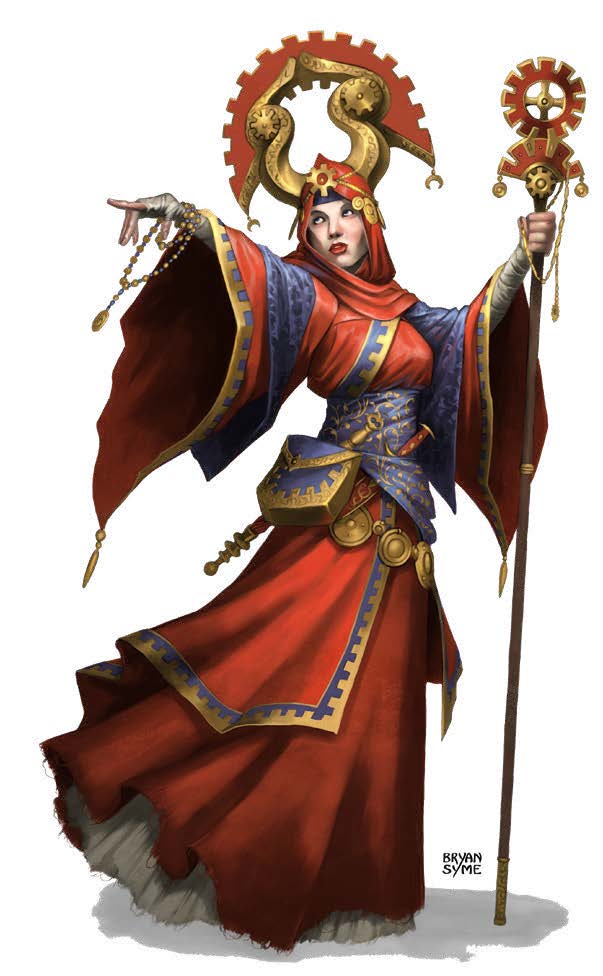 We’re almost at the end of our little series here, so before we close this book, I wanted to chat about a pillar of good gaming that I hold very dear: the art of descriptive storytelling. I believe many of us who choose to run roleplaying games do so because we have fallen in love with the genre through books, movies, and video games. These imaginative works capture our minds and interests, and we want to start creating stories of our own using these fantastical elements. Conjuring vivid and exciting imagery for our players and audiences sets good GMs apart from great ones, and I’m going to talk about two main ways to hone this skill. First off, I’ll talk about some strategies for empowering your narration, and secondly, I’ll talk about how to enlist your players to evoke incredible imagery.
We’re almost at the end of our little series here, so before we close this book, I wanted to chat about a pillar of good gaming that I hold very dear: the art of descriptive storytelling. I believe many of us who choose to run roleplaying games do so because we have fallen in love with the genre through books, movies, and video games. These imaginative works capture our minds and interests, and we want to start creating stories of our own using these fantastical elements. Conjuring vivid and exciting imagery for our players and audiences sets good GMs apart from great ones, and I’m going to talk about two main ways to hone this skill. First off, I’ll talk about some strategies for empowering your narration, and secondly, I’ll talk about how to enlist your players to evoke incredible imagery.
A great debate currently rages in tabletop RPG design about “what is the ideal amount of description.” Some camps claim box text read aloud descriptions should be trashed while others rally for a million different nuances of making your read-aloud descriptions more effective. Much of this debate arises because there is a simple truth to telling great stories: keep it simple with a few powerful details. Endless monologues describing a single room of your dungeon will never be well received, just as describing nothing about the room won’t be well received. Your job is to give the players just the facts they need, and one thing to get them invested in your description. This extra investment often comes from a single simple detail that illuminates a sensory aspect about the room. “You step into a small stone room” is nowhere near as exciting as “You step into a small stone room that reeks of garlic.” The room has a story immediately, a quirk, something interesting to grip your players and make the audience pay attention. It’s the same thing with monsters: saying “a troll stomps into the room” is not nearly as fun as describing the troll without ever using the word troll. It drives me bonkers when GMs use monster names, assuming the players, the characters, and the audience knows what the monster looks like without any cause. Learning to sprinkle in these details certainly is an exercise in becoming more creative, and like anything else, there are helpful things you can do to practice. The best advice I have is to consume as much media as possible in the genre your games explore. If you are running a science fiction RPG, then reading and watching sci-fi will give you many tools and examples of excellent details to incorporate into your games. The things that frighten and excite you in movies are likely to do the same for your table.
The next descriptive favor you can do yourself is train your players to pick up some of the work for you. Throughout this series, we’ve talked a lot about encouraging your players to participate in worldbuilding, and descriptive storytelling is no different. To get your players to narrate exciting combat, to tell fantastic descriptions of themselves and their actions, you have to invite them in. And you have to offer these invitations a lot and in many different ways. Some of my easy favorites are asking players to describe how casting their spells looks, asking players what their killing blow looks like, and asking them to describe little details about monsters that set them apart from one another. Players who are not used to storytelling likely won’t know how to respond to these questions initially, but with patience and practice, they will get better at it. Your job is to look for these little openings to invite descriptions from others: perhaps let them describe the magic sword they find, or maybe their keen nose picks up a particular sent in the room, or let them decide the subject of a bard’s bawdy song. Once you start actively looking for these moments to hand off the narrative description baton, you’ll be shocked how many there are. And the best part of this all is that having multiple imaginations describe your world always yields a more exciting result than just one could.
Like becoming a great novelist, becoming a gifted descriptive storyteller takes practice. Draw from the inspiration of the media and the people around you to spice up your narrative. Once you start to notice how others set the stages of their tales, yours will begin to shine.
See you next time adventurers.
___
Greetings travelers! And welcome to Beyond the Audience where we take a look at tips and tricks for building an RPG show that is loved by both your players and the larger audience beyond your table.

This article really highlights the importance of vivid storytelling in RPGs! It reminds me of the creativity you find on platforms like omegle new, where unexpected conversations can spark unique ideas. Engaging with others can truly enhance our narrative skills!